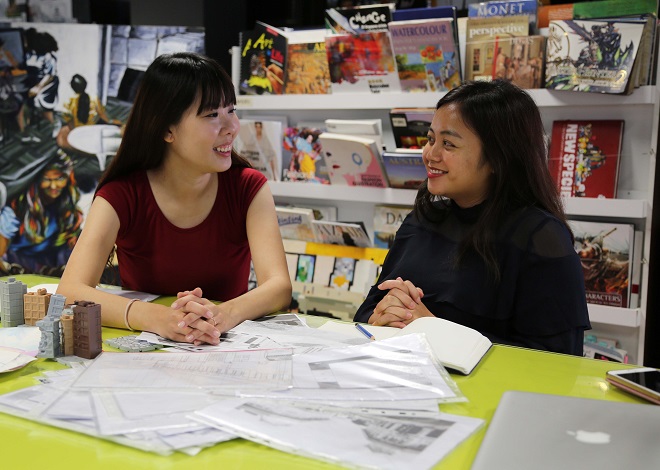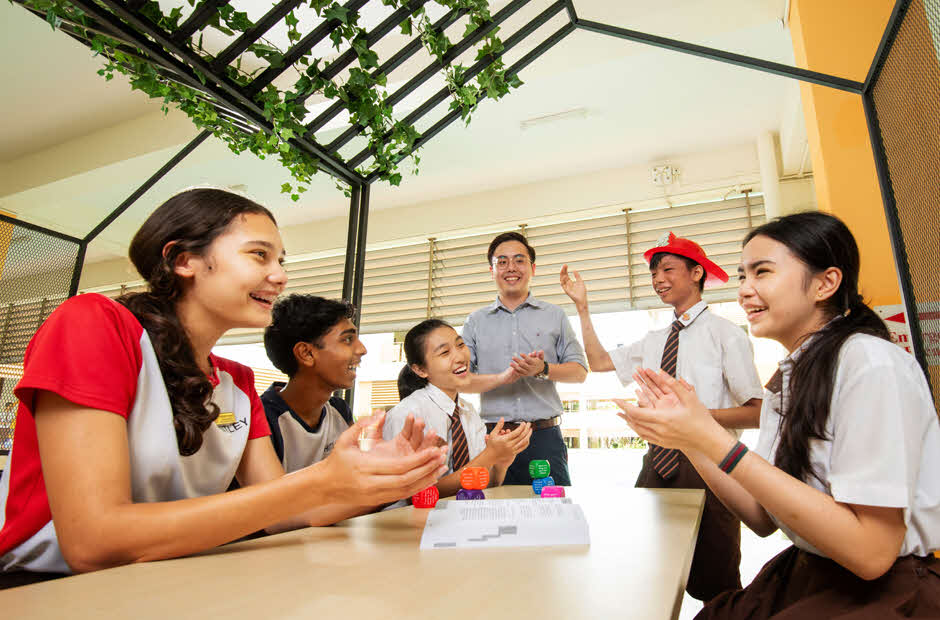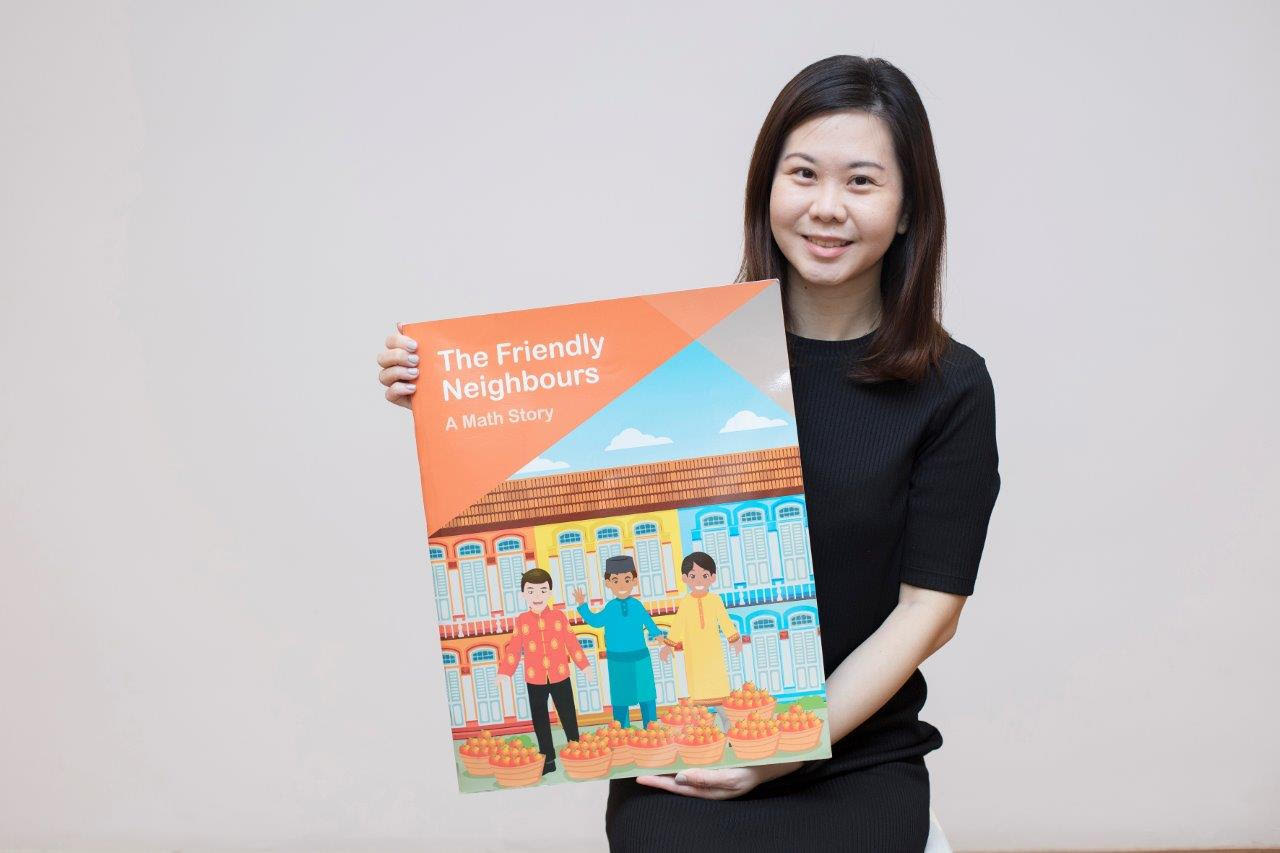Sarene Sim, Ngee Ann Secondary School,Outstanding Youth in Education Award 2017 Recipient
In every school that I have been in, there is the humorous teacher, the creative teacher, the motherly teacher, the friendly teacher, and of course, the no- nonsense teacher who makes sure you do the homework set for you.
A Shy Beginning Teacher
I started out as an introverted teacher who had big hopes that my students would be able to learn that Art helps them to see and interpret the world through a different lens. I delivered my lessons in front of the classroom, talking from start to finish, hoping to “talk” my students into appreciating the value of art. It did not work. When a boy in my class told me I was preaching, I realised it was because they had no choice but to listen passively to me.
I was disappointed, but I knew that I had to engage my students more. I had some ideas for encouraging their participation, but was hesitant to implement them. Thankfully, I was able to turn to Mrs Anne Chan, a senior colleague, for support. She heard me out and never dismissed any ideas I had, but instead helped me refine them.
Eventually, I was getting my students to hold class debates about art, learn concepts through games and songs, and even had them donning sashes in celebration of various achievements.
Before I left that school, Mrs Chan gave me a book entitled, “Nice Girls Don’t Get the Corner Office”. She told me: “Sarene, it’s your time to be confident in your teaching abilities. Take charge and step up!”
I certainly hope I have done so.
Stepping out to Teach Others
Now, I teach at least 400 students each year – an average load for an Art teacher. At the same time, I also conduct sharing sessions and workshops for over 100 teachers. These teachers go on to impact many other students. I am heartened to see many of them gaining the confidence to design and conduct innovative art lessons in their own schools!
One of these workshops is the Beginning Teacher Learning Journey, in which a colleague and I shared our experiences and best practices with the latest cohort of new Art teachers.
I am also part of a group of teachers appointed by the Singapore Teachers’ Academy for the aRts (STAR) as STAR Champions. We experiment with and develop new approaches in student-centred Art Education and pilot these techniques in our classes, train our colleagues to use them in their schools, after which we will compare notes on their efficacy. Developing other teachers’ competencies allows me to reflect and re-look at my own teaching practices.
Making Connections to the World through Art
Parents might wonder why there is a need to teach teachers. Granted, every teacher is an expert in his/her own teaching methods, but from time to time, teachers may be asked to teach a new syllabus or students of a different level.
I firmly believe that all teachers, beginning and experienced, should have professional development opportunities. How else can we keep up with the demands of the ever-changing student profiles and new ideas in the field?
At the same time, my regular lessons have become more student-centric. In the course of my research on methods for teaching Art, I have found the Harvard Graduate School of Education’s Artful Thinking pedagogy to be particularly useful. It emphasises the importance of thinking not only about artworks themselves, but also their connections to the world around them.
In one of my lessons, students viewed time-lapse videos depicting stormy weather. They then had to listen to words or phrases about any aspect of what they saw. I was glad to see them expressing their ideas and feelings about the abstract shapes in the videos, and forming their own personal connections with what they saw.
In another lesson, I brought students to the Singapore Art Museum, asking them questions such as, “What kinds of sounds can you hear in the artwork?”, “Where can these be found in Singapore?”, and “Who might care; who might be affected by it?” I enjoyed watching my students making sense of what they saw.
Paying it forward
What is the difference between teaching students and teaching teachers?
Teachers naturally have a higher level of technical skill. But their concerns are also different. Students will ask for help in drawing a particular object, or colouring a picture. Teachers, on the other hand, want to know how they can better engage students, especially students who do not see the importance of Art. I can also see that teachers are eager to instil the joy of learning in their students and are open to trying new teaching methods. I have no doubt that in order for our students to relish the joy of learning and value different art forms, teachers must first have the joy for learning and teaching. My advice given to teachers in such situations is – “Your students are your Art ambassadors!”
At the end of the day though, they are not so different. Students and teachers are simply trying to figure out how to solve problems as best as they can. Due to the nurturing mentoring experiences and generous sharing which I have received from other teachers, I strive to pay it forward by providing the listening ear for other younger teachers and helping them as I was once helped. As a teacher to both groups, I find myself asking them, “How can I help you?”
Mrs Chan did that for me, and I want to do the same for others.






